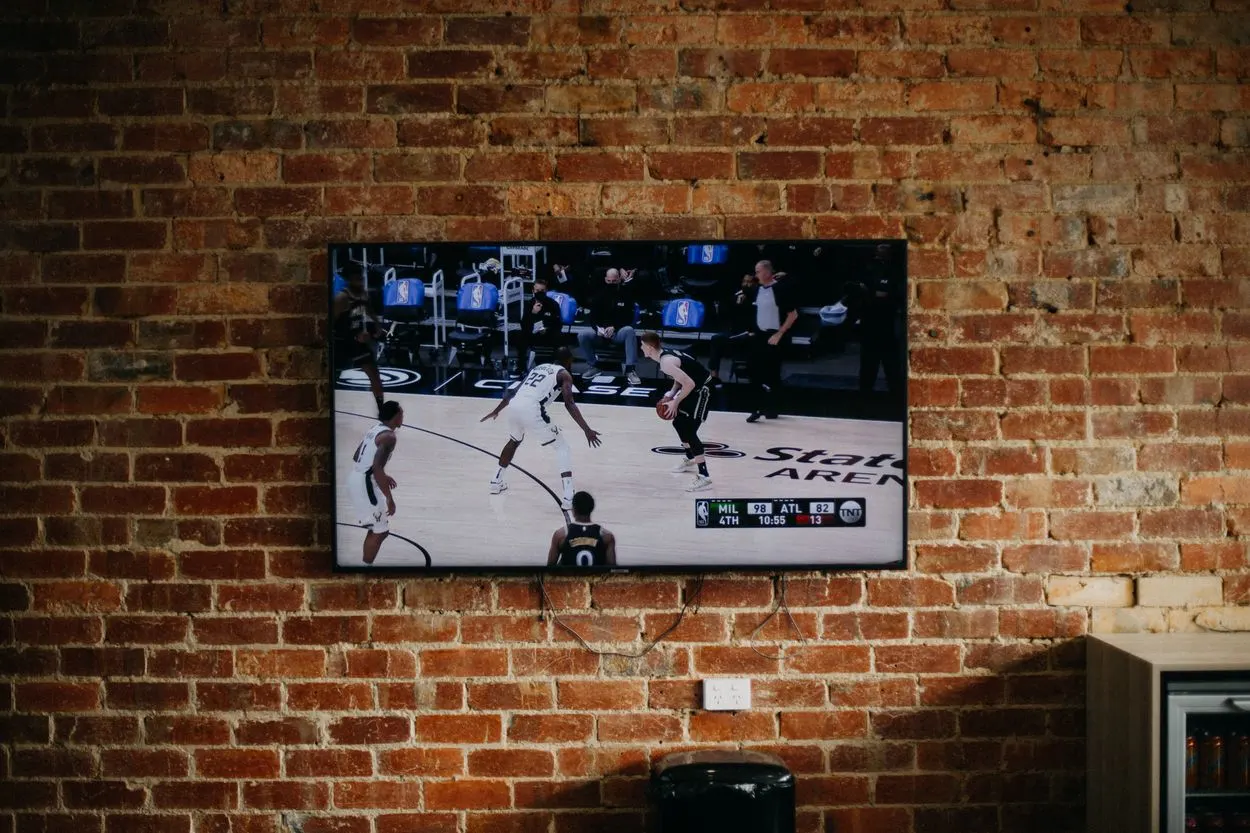It is frustrating to enter a showroom to get a new TV but get confused between these latest technology QLED or UHD used in the latest TV models.
Not sure what they are and which one is better for you? No problem! Let me decode these terms for you to make the right purchase.
Ultra HD TVs or UHD TVs are similar to 4K TVs. The only difference is their pixels. UDH has 2160 vertically and 3840 pixels horizontally.
In comparison, the QLED TV stands for Quantum-dot Light Emitting Diode. This LED TV uses quantum dots that work as miniature emitters. These emitters create pure colors in strict correlation in their size.
The QLED TV performance is better in picture quality than UHD LED TVs.
Let’s differentiate them in detail and see which one is better in terms of quality.
Ultra-High Definition (UHD)
Ultra-High Definition is a hypernym term for a 4K display.
UHD is equal to the number of pixels that create a screen display, where the screen has a resolution of eight million pixels or 3840 x 2160 pixels.
UDH has better picture quality than HD displays which feature one Million Pixels. Because of the high pixel count, UHD displays have better fine and crisp image quality.
UDH models are available in sizes ranging from 43″ – 75″.
Quantum Light-Emitting Diode (QLED)
QLED or Quantum Light-Emitting Diode upgraded version of the display panels. This LED uses small quantum dots (nanoscale crystals that can transport electrons).
Although it has the exact resolution as UHD LED, it is a more refined and premium form that controls color output better with the help of tiny crystal semiconductor particles.
In contrast to other TVs, QLED provides 100 times more brightness. They are stable and don’t wear out like other LED displays.
The quantum dots used in QLED have a longer life, deliver perfect color, consume less power, and have fantastic picture quality.
Difference between QLED and UHD

Both technologies are impressive but differ in performance. It is unfair to say which one is better because both are different technologies that perform other tasks.
Here’s a quick summary table of the main differences between a QLED and a UHD:
| QLED | UHD | |
| Definition | The newest technology was invented by Samsung to provide a high-quality imagery experience to their customers. | Ultra HD TVs or UHD refers to 4k resolution (3,840 x 2,160 pixels) or higher. |
| Feature | Quantum dot particles | higher-resolution versions of the standard LCD |
When compared head to head, QLEDs come out on top. It has higher brightness, larger screen sizes, and lower price tags.
When buying a TV, you should watch out for:
- Color Accuracy
- Motion Blur
- Brightness
Even if you don’t understand a bunch of technical terms that come with buying a television, by judging their visual quality, you’ll be able to determine which TV is best for you.
Color Accuracy: The difference in color quality

When you go to the store, you will see the clear difference in the color quality of all display TVs because all TVs play the same video on loop.
When compared side by side, you can notice QLEDs have excellent color accuracy and performance.
UHD vs. QLED: Who’s more brighter?
QLED has higher brightness than UHD TVs.
Excellent color accuracy with higher brightness creates a higher contrast ratio in the QLED display. These panels can have as much as 1000 nits to 2000 nits brightness.
On the flip side, UHD TVs do not even go above the 500 to 600 nits brightness. That is not even any close to QLED.
Motion Blur: QLED vs. UHD TV
UHD has a higher response time than QLED. The reason is the slow shift of color creates more motion blur.
The response time value is a sign of how quickly the pixels can react to a change in color. So the lower the reaction time, the better the quality you will see on display.
In the case of UHD, because the response time is high, there is a high motion blur that may look cool at first, but it gets annoying the next second.
As for QLEDs, which have a shallow response time, the pixels reach efficiently to color change, and you see a significantly reduced amount of motion blur in comparison.
Here is a quick test video you can watch that will help you compare the QLED and UHD better:
So which one is better? One technology is not better than the other because UHD and QLED are incompatible terms. In fact, you can find QLEDS that are UHD. However, the difference is minor, and QLED is somehow more advanced technology at the same time; it is more expensive.
Is QLED worth it over UHD?
QLED is definitely worth the price you pay in exchange for the best viewing experience and fantastic picture quality.
QLED is an upgraded version of regular Ultra HDTVs. Their panels feature outstanding high-end televisions with unique bright screens and robust scaling ability.
It can produce and display more color with quantum dots than LED TVs. Many famous brands have now introduced their QLED just because they are in demand because of their quality.
The watching experience of QLED is also better compared to UDH. You have to spend more for QLED though some brands are up with mid-range prices.
The most expensive QLED TVs with high specs are 8K TVs. You don’t have to spend extra to buy an 8K resolution. However, if you want to invest in a 75-inch TV, 8K QLED might be a smart move.
What TV has a better picture?
Without any doubt, Samsung QLED TVs has better and upgraded picture quality,
At any resolution, you will be getting the best color accuracy. QLED TVs feature display panels, whereas the UHD is not a display panel; instead, it features resolutions.
Regarding picture quality, QLED TVs still beat UDH TVs, even though the latter technology has seen many improvements of late compared to OLED TVs.
QLED uses less energy, offers the best viewing angle by far, and, though still a little more expensive, has come down in price considerably.

Which is better: UHD or 4K?
There isn’t a huge difference between UHD Vs. 4K TVs from a viewer standpoint. 4K is a term we all are familiar with; it is used interchangeably to refer to that exact resolution as of UHD (3840×2160).
But when it comes to digital cinema, 4K is more comprehensive than UHD by 256 pixels. 4K resolution in digital cinema is 4096*2160 pixels. Because of fewer horizontal pixels, a UHD television cannot achieve the exact resolution as a 4K set.
In simple words, both terms are used pretty much interchangeably, but in reality, 4K is used for professional standards and cinema production. In contrast, the UHD is for a consumer display and broadcast standard.
Which is better: OLED, QLED, or UHD?
OLED has the upper hand in terms of quality. They generally have a much faster response time than QLEDs or UHD.
As for the Home Theater system, QLED is also one of the best options if you can’t afford OLED.
However, if you can spend some extra, OLED is the way to go!
In terms of watching experience, OLED and QLED are the same. It is seen in almost all famous brands that are using OLED and QLED in their high-end Models; the quality speaks for itself.
OLED has a significantly better and wider viewing angle when compared to QLED and UHD TVs. In LEDs, there are shutter issues because of screen pixels, but OLED comes with Modern and up-to-date pixels powered by self-illumination capabilities.
QLEDs deliver higher brightness, have larger screen sizes, no risk of burn-in, and lower price tags.
On the other hand, OLED comes with deeper blacks and contrast, uses less power, provides better viewing angles, and has a longer lifespan.
OLED pixels can change color faster and luminosity, unlike QLED, wait for a backlight to shine through multiple screen layers.
Thus, OLED is a clear winner in terms of better quality.
Wrapping Up
In short, QLED and UHD both are excellent display panels and have incredible visibility on all sides― however, you will notice a huge difference between them.
You will find many QLED TVs with UHD display in them since UHD is nothing but the resolution.
Apart from these few terms, there are hell lot of other points that you should know before buying any smart TV.
Other Articles
- Habibi And Habibti: A Language of Love In Arabic
- The Difference between Catholicism and Christianity- (Well distinguished contrast)
- What are the differences between OnlyFans and JustFor.Fans? (All you need to know)
- Scots vs. Irish (Detailed comparison)
- Snow Crab VS King Crab VS Dungeness Crab (Compared)
Click here to view the web story version discussing these different displays.

